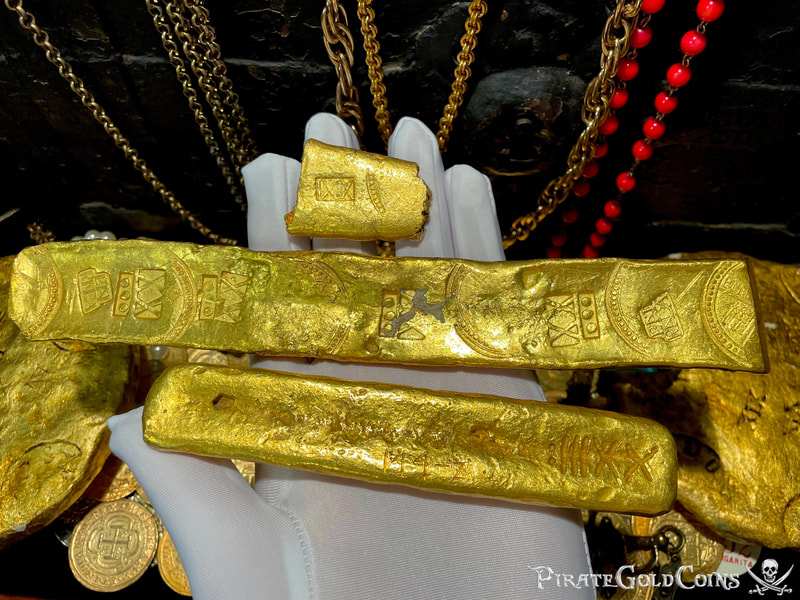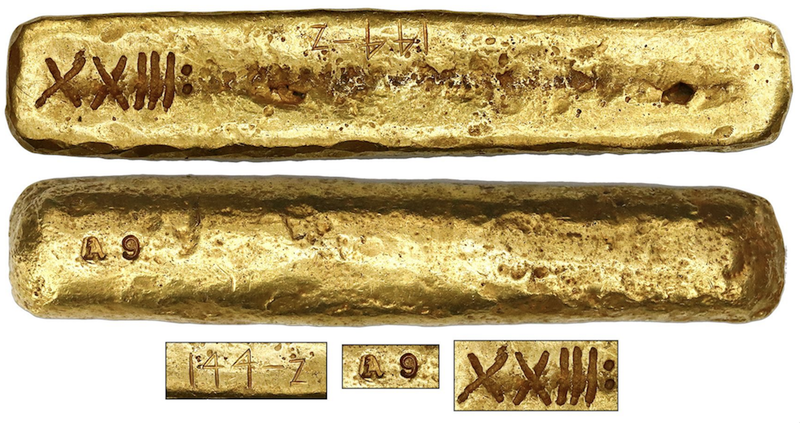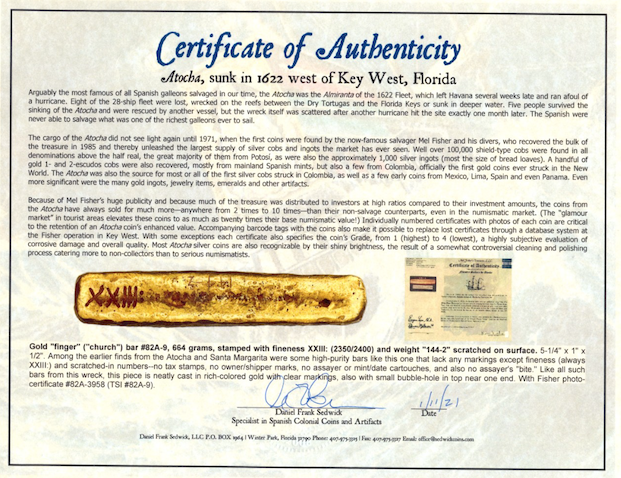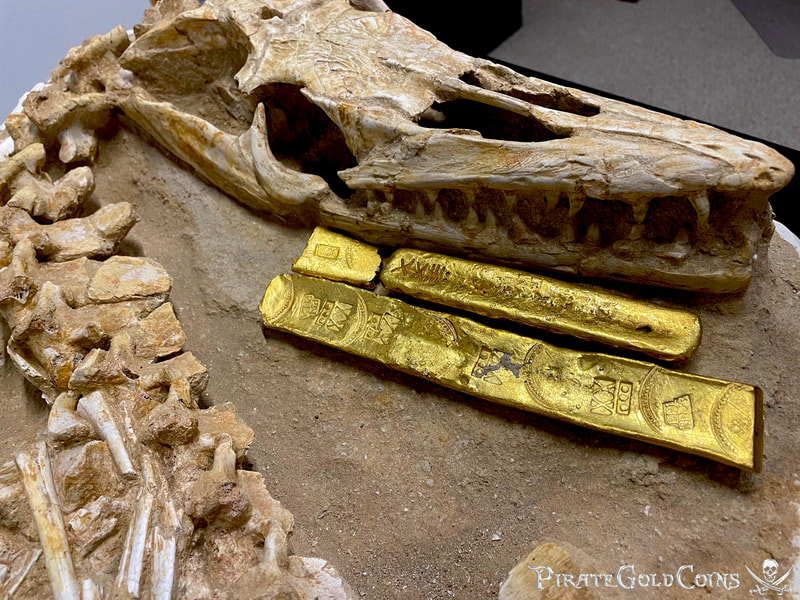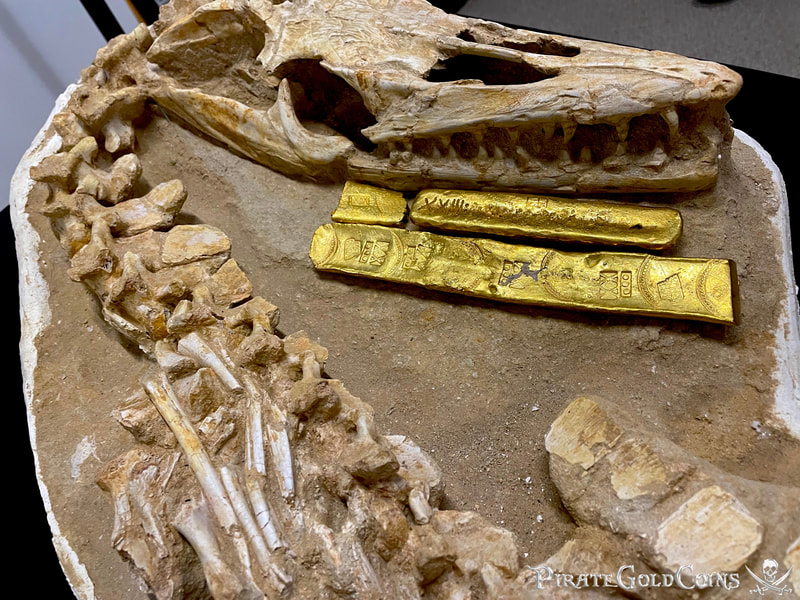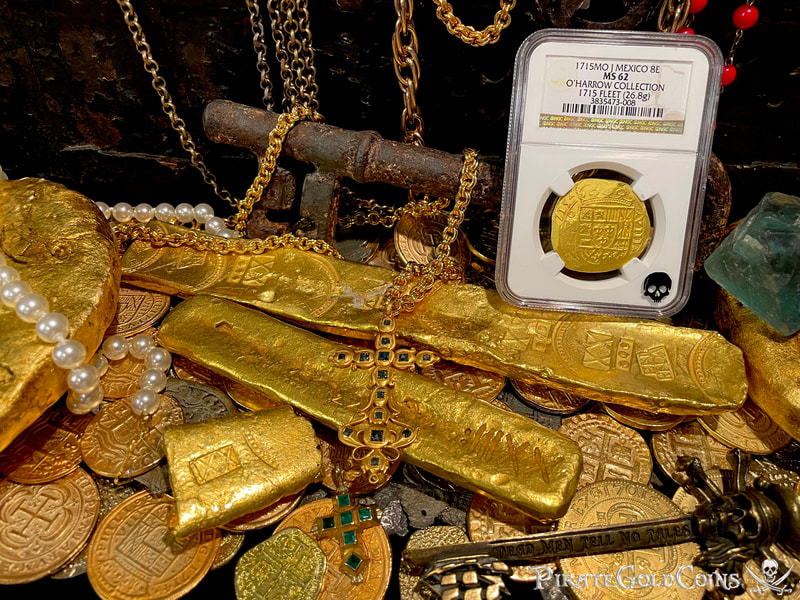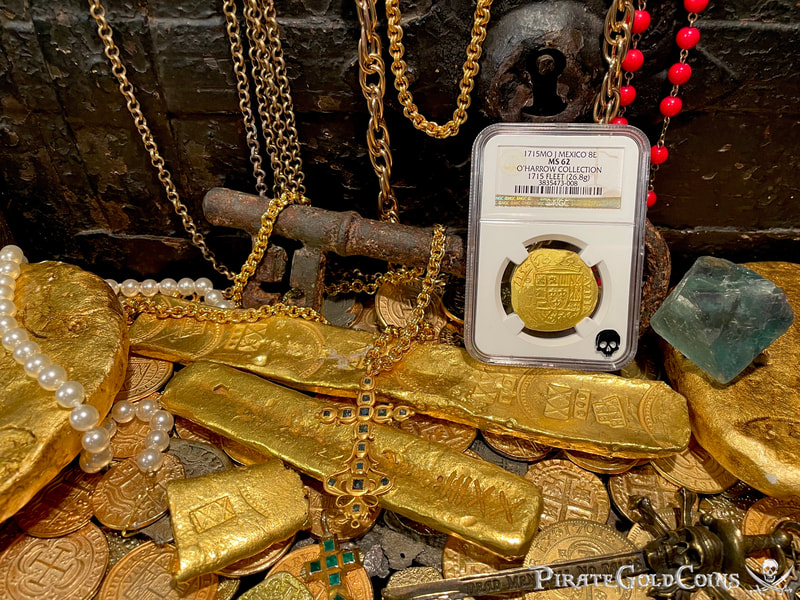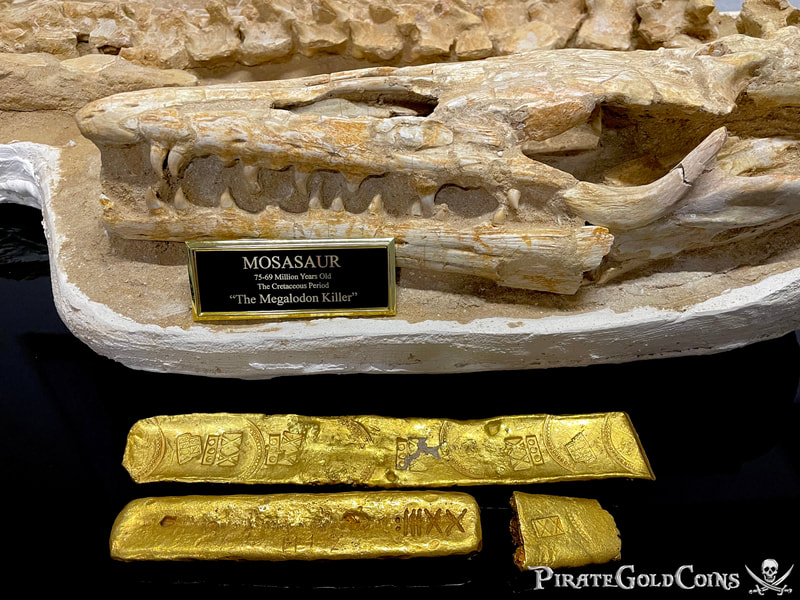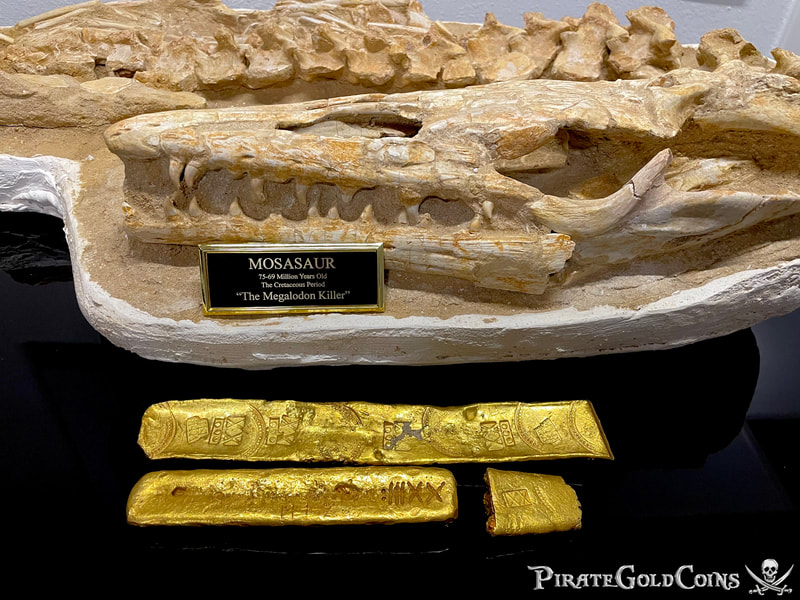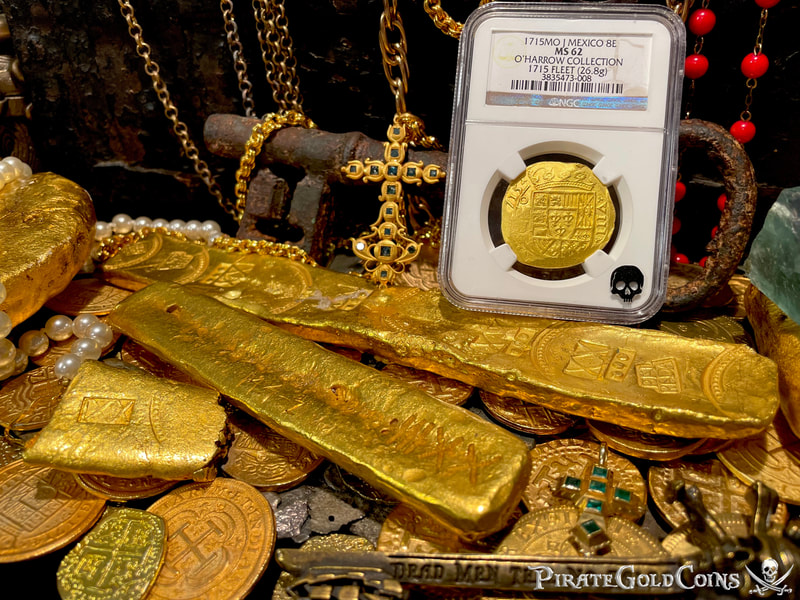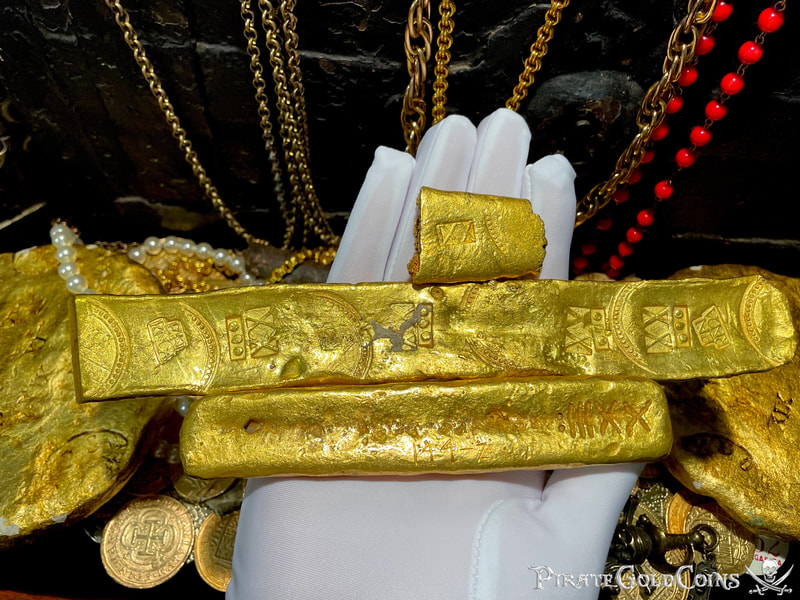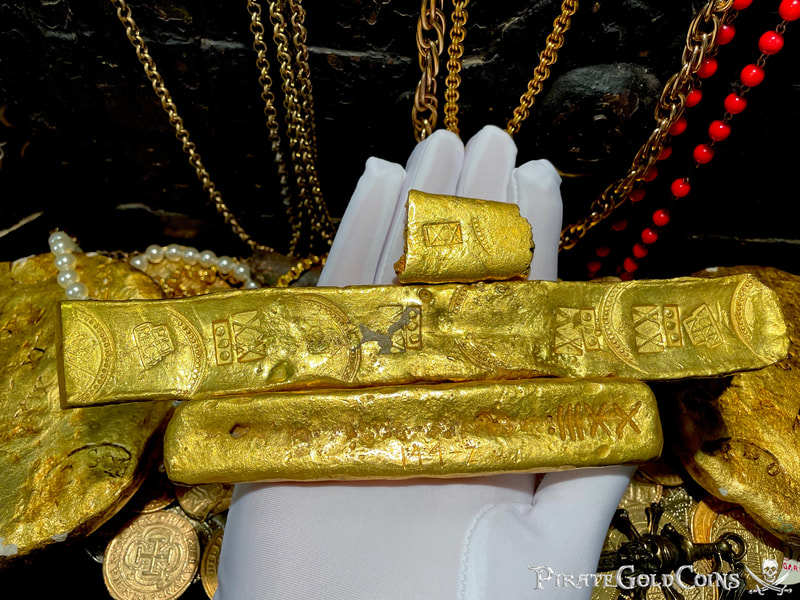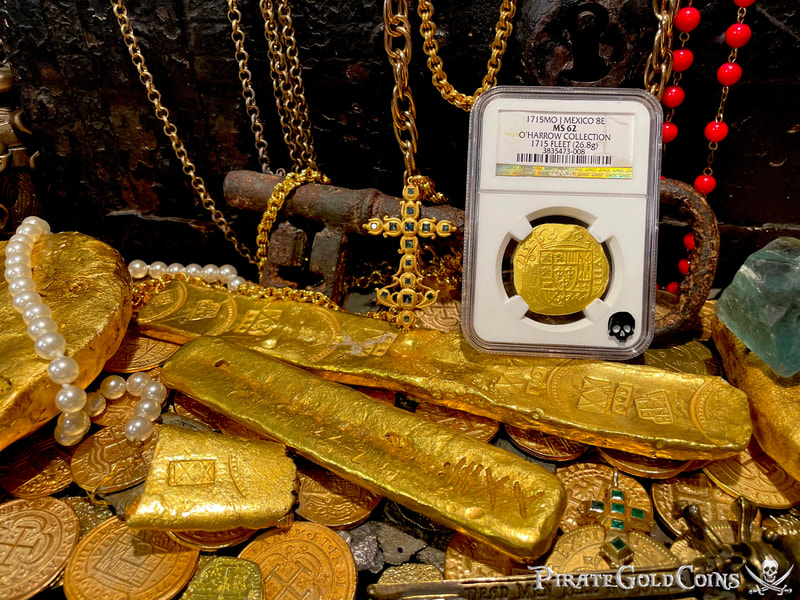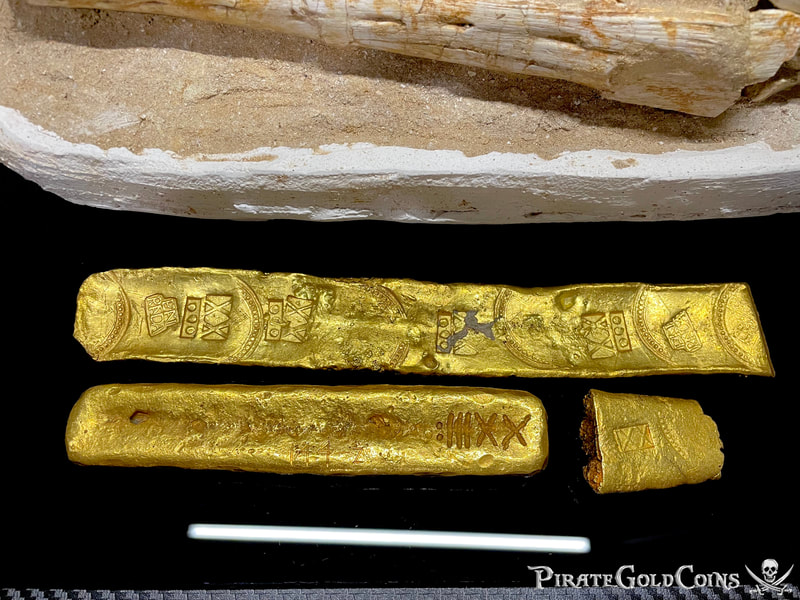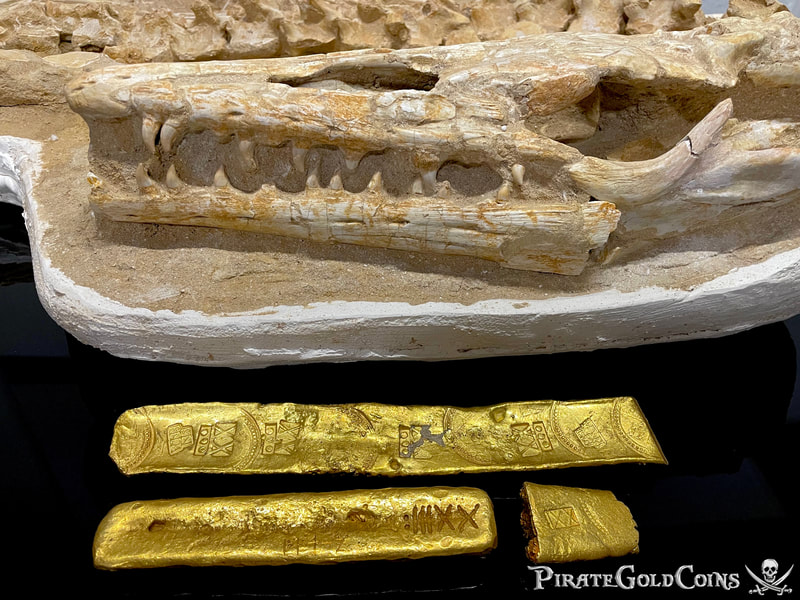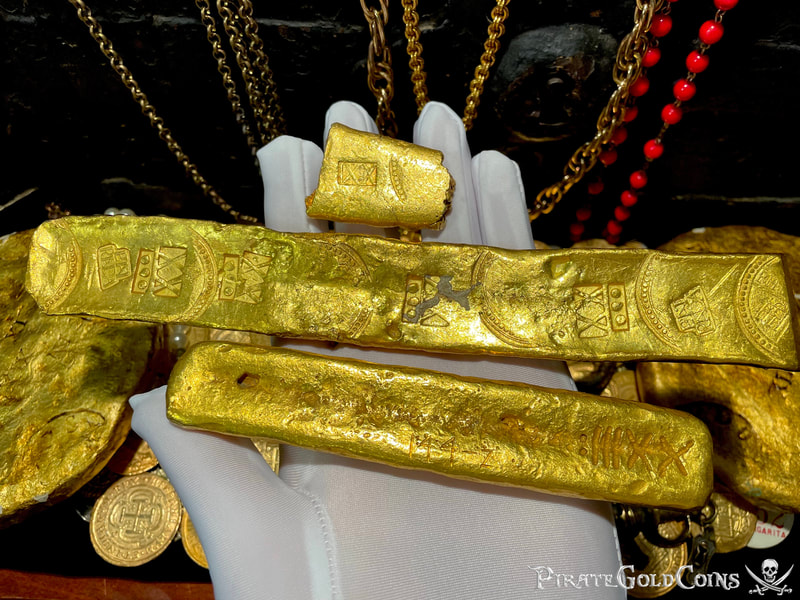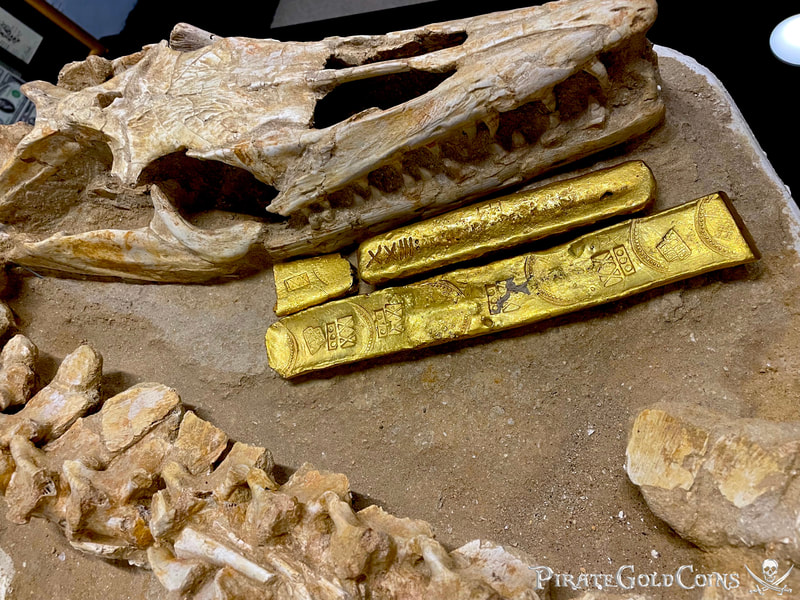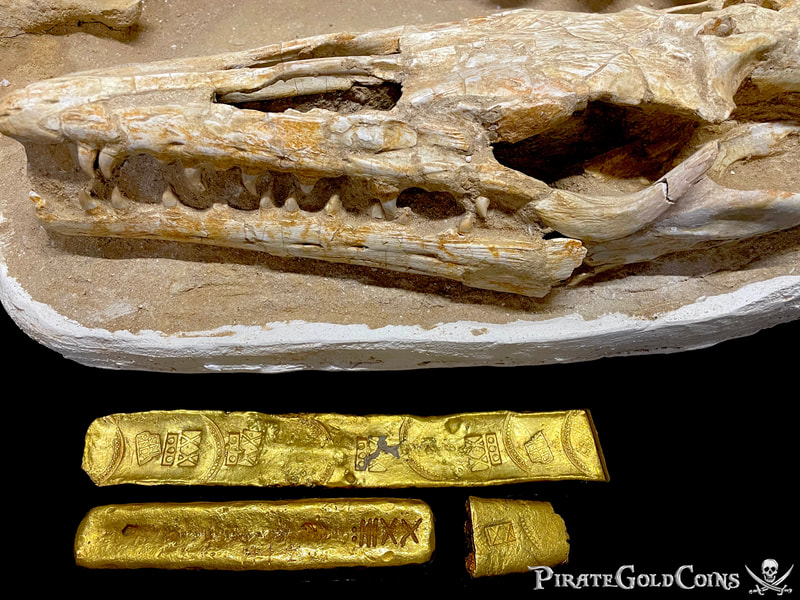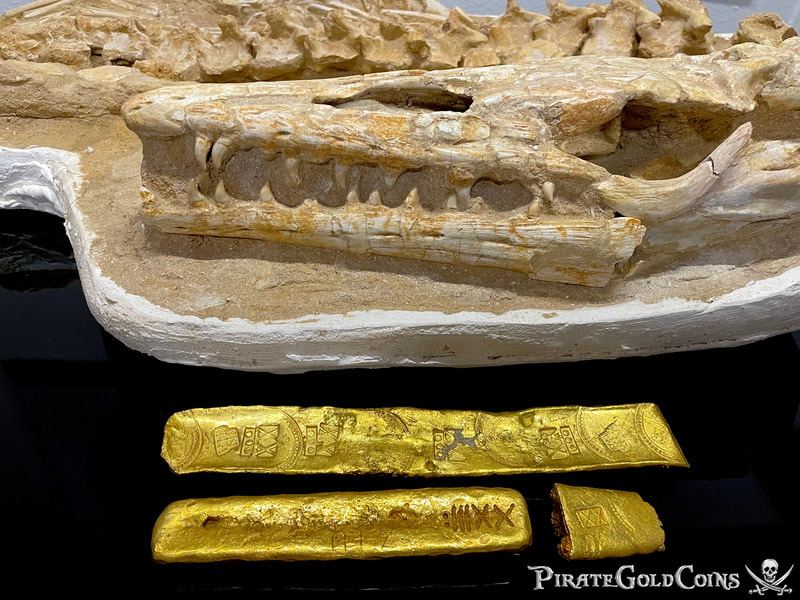"Church Bar" or "Contraband Bar" from Atocha 1622 Shipwreck
Gold “Finger (“church”) or Contraband bar #82A-9, 664 grams, stamped with fineness XXIII: (2350/2400) and weight of approx. 622gm (20 oz). The size is 5 1/4" x 1" x 1/2". The high fineness of 23.5kt sets out a bright radiant Gold shine.
From the Atocha, there was no passengers by that name on the ship. So who or what was the Pecarta in the stamp? Further research in archival sources may reveal that this was the name of the person overseeing the foundry, much like the assayers at the mints producing the coins.
One of the primary considerations when assessing an object of this nature is just how few, and far in between gold bars recovered from shipwreck sites are, remaining in their original condition. The bars offer a lens through which we can begin to view the economic systems at play in the Colonial era of Latin America, with extensions reaching through to the kingdom of Spain, and beyond to the interests of the Roman Catholic Church.
While data on the early mining and assayers is either poorly studied or lost, there are some bars that tell us much about where they were produced and can point to possible owners.
Bar #82A-3958, was originally termed a “church bar”. They are now thought to be contraband. These bars bear only one of the distinguishing marks found on registered bars, (i.e., the karate rating) expressed in roman numerals. They have the addition of a series of Arabic numerals that, when first found, presented a bit of a mystery. These numerals are now known to represent the evaluation of the bars in a antiquated Spanish evaluation known as “Castellanos”.
The scratched-in numbers on both wrecks’ ingots of this type in fact refer to weights in an antiquated system where the main unit known as a peso or castellano del oro (144 in this case) is equivalent to 4.6 grams, and the secondary unit known as a tomin (2 in this case) is equivalent to 0.575 gram, giving a marked weight for this bar as 663.55 grams, matching the actual weight.
1982 Gold bar Finds
In 1982 a cache of 14 (some sources show 16) of these gold bars were recovered from the Atocha. Gold bar number 82A-3958 was recovered by the vessel Golden Venture, a group that was working along with Mel in 1982. Led by Ian Koblick, who is one of the unsung underwater explorers of recent times. He constructed and maintained, for many years, an underwater habitat called Jules’ Undersea lodge off Key Largo, FL. This habitat allowed divers and scientist to remain underwater for days at a time without surfacing.
It was his crew and more specifically his son that helped to recover 14 of these unique “church bars” in 1982. Being unlike any of the officially taxed bars has led to the speculation that these were possibly meant for the Catholic Church and hence did not require the taxation of marks.
Research since that time has shown that the likelihood is that these were not “church bars,” rather, these were a shipment of unregistered or contraband gold. The amount, markings, and uniformity of which, indicates that these were carefully thought-out smuggling attempts. 31
Click Here to read more about the 'Atocha 1622 Shipwreck'
From the Atocha, there was no passengers by that name on the ship. So who or what was the Pecarta in the stamp? Further research in archival sources may reveal that this was the name of the person overseeing the foundry, much like the assayers at the mints producing the coins.
One of the primary considerations when assessing an object of this nature is just how few, and far in between gold bars recovered from shipwreck sites are, remaining in their original condition. The bars offer a lens through which we can begin to view the economic systems at play in the Colonial era of Latin America, with extensions reaching through to the kingdom of Spain, and beyond to the interests of the Roman Catholic Church.
While data on the early mining and assayers is either poorly studied or lost, there are some bars that tell us much about where they were produced and can point to possible owners.
Bar #82A-3958, was originally termed a “church bar”. They are now thought to be contraband. These bars bear only one of the distinguishing marks found on registered bars, (i.e., the karate rating) expressed in roman numerals. They have the addition of a series of Arabic numerals that, when first found, presented a bit of a mystery. These numerals are now known to represent the evaluation of the bars in a antiquated Spanish evaluation known as “Castellanos”.
The scratched-in numbers on both wrecks’ ingots of this type in fact refer to weights in an antiquated system where the main unit known as a peso or castellano del oro (144 in this case) is equivalent to 4.6 grams, and the secondary unit known as a tomin (2 in this case) is equivalent to 0.575 gram, giving a marked weight for this bar as 663.55 grams, matching the actual weight.
1982 Gold bar Finds
In 1982 a cache of 14 (some sources show 16) of these gold bars were recovered from the Atocha. Gold bar number 82A-3958 was recovered by the vessel Golden Venture, a group that was working along with Mel in 1982. Led by Ian Koblick, who is one of the unsung underwater explorers of recent times. He constructed and maintained, for many years, an underwater habitat called Jules’ Undersea lodge off Key Largo, FL. This habitat allowed divers and scientist to remain underwater for days at a time without surfacing.
It was his crew and more specifically his son that helped to recover 14 of these unique “church bars” in 1982. Being unlike any of the officially taxed bars has led to the speculation that these were possibly meant for the Catholic Church and hence did not require the taxation of marks.
Research since that time has shown that the likelihood is that these were not “church bars,” rather, these were a shipment of unregistered or contraband gold. The amount, markings, and uniformity of which, indicates that these were carefully thought-out smuggling attempts. 31
Click Here to read more about the 'Atocha 1622 Shipwreck'





